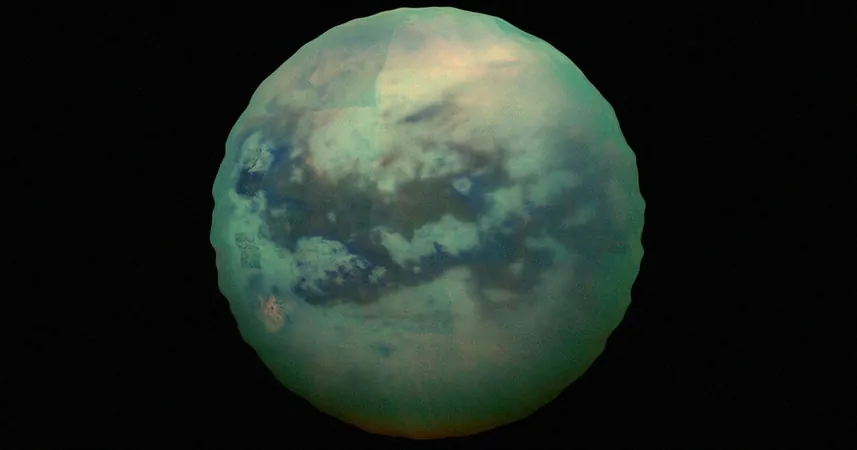
Titan's Enigmatic Atmosphere: Scientists Uncover Surprising Motion
2025-05-27
Author: Jacques
A Curious Discovery on Saturn's Largest Moon
In an astonishing revelation, researchers have discovered that the dense atmosphere surrounding Titan, Saturn’s largest moon, behaves in a wholly unexpected manner. This finding, recently published in The Planetary Science Journal, stems from an extensive analysis of 13 years’ worth of thermal infrared data collected during NASA and the European Space Agency's Cassini-Huygens mission.
A Gyroscopic Twist in the Atmosphere
The intriguing aspect of Titan's atmosphere is its peculiar wobble. Rather than spinning in sync with its surface, Titan’s atmosphere sways like a gyroscope, shifting alongside the moon’s nearly 30-Earth-year seasonal cycles. Lucy Wright, a postdoctoral researcher at the University of Bristol and the study’s lead author, remarked, "Titan’s atmospheric tilt behaves in a bizarre manner, as if it is stabilizing itself in space." This quirky characteristic makes Titan an even more fascinating subject for further exploration.
A Mystery Deepens
As scientists dive deeper into Titan's mysteries, they are left with more questions than answers. Wright speculates that some past event may have caused the atmosphere to tilt off its spin axis, resulting in its current wobbling state. "What’s particularly perplexing is that the tilt direction remains constant in space, unaffected by the influences of the Sun or Saturn," coauthor Nick Teanby noted. This unexpected behavior complicates the quest to uncover the underlying reasons.
Impact on Future Missions
These groundbreaking findings hold significant implications for NASA’s upcoming Dragonfly mission, set to launch no earlier than 2028. This daring rotorcraft aims to navigate Titan’s dense atmosphere to investigate its surface further. However, it faces daunting challenges: frigid temperatures around -300°F, surface pressures 1.5 times that of Earth, and winds that can reach speeds 20 times faster than Titan’s rotation.
Wider implications for Atmospheric Science
Not only do these discoveries deepen Titan's mysteries, but they could also reshape how we understand atmospheres, including our own. Conor Nixon, a planetary scientist at NASA Goddard, emphasized this point, stating, "The peculiar behavior of Titan’s atmosphere raises fascinating questions, not just for Titan itself, but for broader atmospheric physics, including on Earth."
Extraterrestrial Life on Titan?
While the prospects of finding extraterrestrial life on Titan are dim, a recent study suggests that the moon's rivers and lakes of liquid methane render it quite inhospitable to conventional life. However, tiny glycine-consuming microbes might survive in its harsh oceans, offering a glimmer of hope in the vast cosmos.
Conclusion: Titan's Ongoing Mystique
As scientists continue to unravel Titan’s atmospheric enigmas, this distant moon promises to remain a captivating subject of research for years to come. With each discovery, we move closer to understanding not just Titan, but also the fundamental principles governing planetary atmospheres throughout the universe.









 Brasil (PT)
Brasil (PT)
 Canada (EN)
Canada (EN)
 Chile (ES)
Chile (ES)
 Česko (CS)
Česko (CS)
 대한민국 (KO)
대한민국 (KO)
 España (ES)
España (ES)
 France (FR)
France (FR)
 Hong Kong (EN)
Hong Kong (EN)
 Italia (IT)
Italia (IT)
 日本 (JA)
日本 (JA)
 Magyarország (HU)
Magyarország (HU)
 Norge (NO)
Norge (NO)
 Polska (PL)
Polska (PL)
 Schweiz (DE)
Schweiz (DE)
 Singapore (EN)
Singapore (EN)
 Sverige (SV)
Sverige (SV)
 Suomi (FI)
Suomi (FI)
 Türkiye (TR)
Türkiye (TR)
 الإمارات العربية المتحدة (AR)
الإمارات العربية المتحدة (AR)